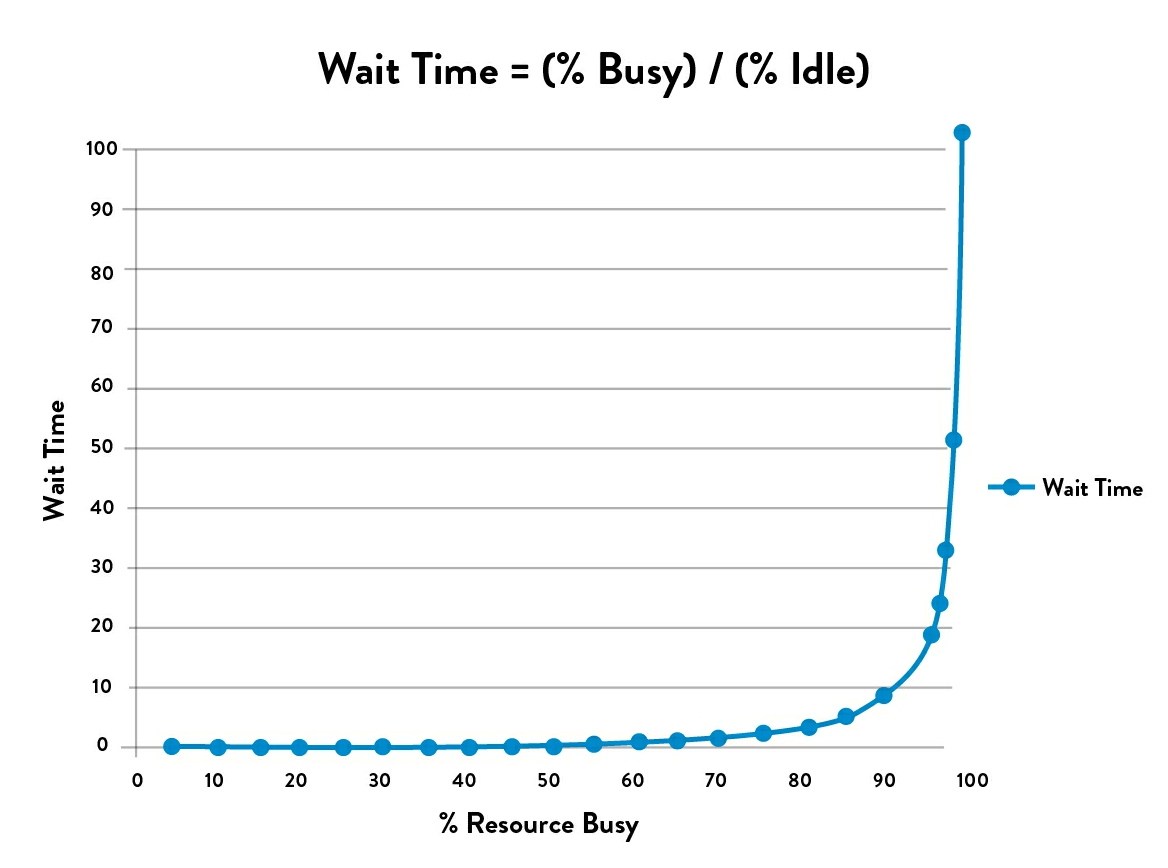Why going slowly speeds teams up
If I had to characterise the default way of doing things within average companies it would, unfortunately, include giving people more and more things to do until they can’t cope.
This is extremely inefficient, as this post explains a bit more scientifically than I could ever hope to do.
The most important, but actually probably the simplest to influence, is the utilization of the team. Just plan less work and give your team some slack. But simple does not mean easy. It's very counterintuitive. “What do you mean, plan less work? How is that going to speed things up?” Well, because science says so!Source: Ignore the King(man) at your own peril | Michal TáborskýBut if science and beautiful math formulas fail to convince, you can reach for an example everyone should be able to understand. The analogy is not perfect, but works pretty well. I am talking of course about traffic jams on the highway. I assume you have been in few. Have you noticed, how when the number of cars on the highway starts to increase, the speed you are driving goes down a bit? And then, it reaches some kind of seemingly illogical point, where suddenly everything comes to a screeching halt, even when there is no apparent reason like an accident or closure?
Remember how the traffic experts keep telling you: “If there is a lot of traffic, slow down and avoid switching lanes to avoid causing a traffic jam?” Well, that’s because with a lot of traffic, the road has a high utilization (ie. less space between cars). By switching lanes you are increasing the variability of arrival (each segment of each lane works actually as a separate queue). By going fast, you are unable to keep driving a same constant speed like everyone else and thus increase the variability of the duration of the task. You are constantly speeding up and slowing down. The task in this case means “moving one meter forward”. Under high utilization, even slight increase in either of the two variabilities or the utilization itself has a huge effect on the queue size. The result: traffic jam.
